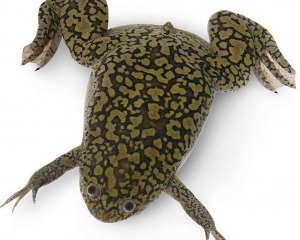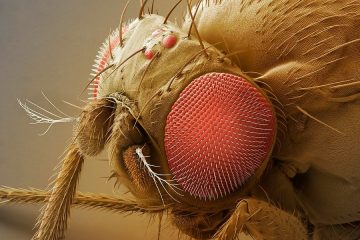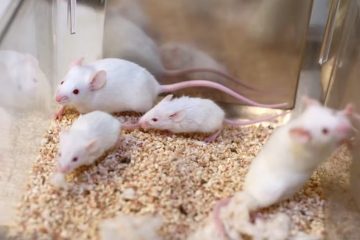
In the vast and intricate world of biological research, the choice of a model organism is a pivotal decision that can significantly influence the scope and depth of scientific discovery. For decades, a handful of model organisms, including mice, fruit flies, and zebrafish, have dominated biomedical research, offering invaluable insights into genetic, developmental, and physiological processes. These organisms were chosen for their ease of maintenance, short generation times, and, in many cases, their genetic similarities to humans. However, as research questions grow more sophisticated and diverse, the scientific community has sought additional model organisms that can provide new insights and approaches.
However, the quest for more diverse and versatile models has led scientists to explore beyond these traditional boundaries. One such emerging star is Xenopus tropicalis, a frog species that is rapidly gaining recognition as a powerful tool in modern biological research. This unassuming amphibian, also known as the Western-clawed frog, has become a linchpin in biological research, offering profound insights into the intricacies of life.
Meet the Remarkable Xenopus tropicalis
Native to the rainforests of Sub-Saharan Africa, Xenopus tropicalis is a small, fully aquatic frog that has rapidly gained popularity in the scientific community. Xenopus tropicalis is significantly smaller than its close relative, Xenopus laevis. Adult females typically reach a length of about 4 to 5 centimeters (1.6 to 2 inches), while males are slightly smaller, making them more manageable in a laboratory setting. Their smaller size facilitates housing and breeding in research facilities. The skin of Xenopus tropicalis is smooth and moist, with a mottled pattern that can vary in color from olive green to brown, aiding camouflage in their natural aquatic habitats.

A notable characteristic of Xenopus tropicalis is the presence of small, keratinized structures on their hind feet, resembling claws, from which the genus Xenopus (meaning “strange foot” in Greek) derives its name. These claws are primarily used for tearing apart food. Unlike many amphibians, Xenopus species lack tongues and external eardrums but possess lateral line systems similar to those found in fish, which detect vibrations in the water.
The Genomic Advantage
One of the most compelling genomic advantages of Xenopus tropicalis is its diploid genome. In contrast to the tetraploid genome of its close relative, Xenopus laevis, Xenopus tropicalis diploid genome provides simplified genetic manipulations and interpretations. This characteristic is particularly beneficial for forward and reverse genetic studies, where the goal is to link specific genes to their phenotypic outcomes. A diploid genome reduces the complexity associated with gene duplication and redundancy, common challenges in tetraploid or higher ploidy organisms, thereby enhancing the efficiency of gene knockout or knockdown experiments.
Xenopus tropicalis’ relatively rapid lifecycle and high fecundity are significant assets for genomic studies. These frogs can reach sexual maturity in as little as four to six months, a stark contrast to the one to two years required for Xenopus laevis. This rapid turnover allows for quicker generation of mutant lines and transgenic models, facilitating studies on gene function, regulatory networks, and developmental processes. Moreover, the ability of a single female to lay thousands of eggs at a time enables high-throughput genetic screens that are less feasible in mammals or other traditional model organisms with lower reproductive rates.

Also, this frog species occupies a critical evolutionary position, bridging the gap between fish and mammalian models. This offers unique opportunities to explore vertebrate evolution and development, allowing researchers to trace the origins of complex traits and organ systems.

The Developmental Window
The developmental window of Xenopus tropicalis spans from fertilization to metamorphosis, encompassing a series of precisely orchestrated events crucial for the transformation of a fertilized egg into a fully-formed tadpole. This period is characterized by rapid cell division, gastrulation, neurulation, organogenesis, and eventually metamorphosis into an adult frog. Notably, Xenopus tropicalis exhibits external fertilization, allowing for easy manipulation and observation of early developmental stages under laboratory conditions.

Gastrulation marks a pivotal phase during which the single-layered blastula undergoes complex morphogenetic movements to form the three primary germ layers: ectoderm, mesoderm, and endoderm. These germ layers subsequently give rise to various tissues and organs, setting the foundation for the organism’s body plan. The transparency of Xenopus tropicalis embryos facilitates the visualization of these dynamic processes, enabling researchers to dissect the molecular mechanisms underlying gastrulation and subsequent developmental events.
Furthermore, Xenopus tropicalis’s developmental window offers a unique opportunity to study the genetic regulation of organogenesis and tissue differentiation. The advent of techniques such as transgenesis and gene editing has enabled precise manipulation of gene expression, allowing researchers to elucidate the roles of specific genes in controlling developmental processes. Comparative studies between Xenopus tropicalis and other model organisms, including Xenopus laevis and mammals, have provided valuable insights into the conservation and divergence of developmental pathways across species.
A Window into Human Health
Beyond its significance in fundamental biological research, Xenopus tropicalis has a role in elucidating aspects of human health. Leveraging the similarities between frog and human biology, researchers gain a unique perspective on developmental disorders, cancer, and the complexities of the human immune system. This frog becomes a bridge between basic research discoveries and potential applications in improving human health.
Recent literature has continued to underscore the importance of Xenopus tropicalis in advancing biomedical research. Studies published in the last few years have focused on various aspects, further highlighting its impact on human health.

One notable area of research involves the use of X. tropicalis in cancer studies. Recent publications have delved into the frog’s relevance in modeling human cancers, providing insights into the genetic and molecular mechanisms underlying tumor formation and progression. This information is crucial for developing targeted therapies and understanding the intricacies of different cancer types.
In the realm of genetics, X. tropicalis has been utilized to investigate gene function and regulation. The availability of advanced genetic tools, including CRISPR/Cas9, has facilitated precise genome editing in these frogs. Recent literature showcases how this technology is employed to study specific genes implicated in human diseases, aiding in the identification of potential therapeutic targets.

Furthermore, X. tropicalis has made significant contributions to our understanding of neurodevelopmental disorders. Recent studies have explored the frog’s nervous system, providing insights into the molecular events governing neural development. This knowledge is vital for unraveling the complexities of human brain development and holds implications for understanding and potentially treating conditions like autism and intellectual disabilities.
In the context of regenerative medicine, the latest research has delved into the molecular pathways involved in tissue regeneration in X. tropicalis. Recent literature highlights how studying the frog’s regenerative abilities may inspire innovative approaches to enhance tissue repair in humans, opening new avenues for therapeutic interventions.

As researchers continue to uncover the intricacies of biological processes through X. tropicalis, the potential applications for human health are vast. This amphibian continues to be a powerhouse in scientific discovery, bridging the gap between basic research and translational medicine. The ongoing exploration of Xenopus tropicalis is poised to yield further breakthroughs with profound implications for human health and well-being.
As we navigate the complexities of scientific exploration, Xenopus tropicalis emerges as a beacon of discovery. This amphibian transcends the confines of laboratories, offering a rich tapestry of possibilities for understanding life’s intricacies. Our exploration of Xenopus tropicalis isn’t merely an academic pursuit; it’s an endeavor to decode the secrets of this remarkable frog, unraveling the tapestry of life one leap at a time.
Written by:
Navoda Keerawella and Nishakya Liyanarachchi
4th Year Undergraduates
Immunology and Integrated Molecular Biology Honors,
Faculty of Science,
University of Colombo.
References:
- Hellsten, U., Harland, R. M., Gilchrist, M. J., Hendrix, D. A., Jurka, J., Kapitonov, V. V., Ovcharenko, I., Putnam, N. H., Shu, S., Taher, L., Blitz, I. L., Blumberg, B., Dichmann, D. S., Dubchak, I., Amaya, E., Detter, J. C., Fletcher, R. B., Gerhard, D. S., Goodstein, D., . . . Rokhsar, D. S. (2010). The Genome of the Western Clawed Frog Xenopus tropicalis. Science, 328(5978), 633–636. https://doi.org/10.1126/science.1183670
- Hirsch, N., Zimmerman, L. B., & Grainger, R. M. (2002). Xenopus, the next generation: X. Tropicalis genetics and genomics. Developmental Dynamics, 225(4), 422–433. https://doi.org/10.1002/dvdy.10178
- Showell, C., & Conlon, F. L. (2009). The Western Clawed Frog (Xenopus tropicalis): An Emerging Vertebrate Model for Developmental Genetics and Environmental Toxicology. CSH Protocols, 2009(9), pdb.emo131. https://doi.org/10.1101/pdb.emo131
- AmphibiaWeb – Xenopus tropicalis. (n.d.). https://amphibiaweb.org/species/5246
Image Courtesy:
- Featured Image: https://bitly.ws/3gqrG
- Image 01: https://bitly.ws/3gquy
- Image 02: https://bitly.ws/3gquD
- Image 03: https://bitly.ws/3gqv3
- Image 04: https://bitly.ws/3gqve
- Image 05: https://bitly.ws/3gqvo
- Image 06: https://bitly.ws/3gqvD
- Image 07: https://bitly.ws/3gqvV



0 Comments